Listener
Last year was my first CanJam, and it was tons of fun. I loved finally meeting all of my friends in person, getting food together in the city, and testing a whole crap load of audio gear. After it all though, I cannot deny: I was exhausted.
This year... I learned that last year was basically a leisurely stroll in the park.
Even more of my friends came into the city for the event this year. The brands in attendance were almost doubled, and my friends and I were covering the event as press. The event was at least three times as packed as last year, and balancing all of the meet-n-greet, box-ticking, game-planning, and getting around to trying everything was really a lot harder than I'd expected.
At the end of it all I needed a whole week just to recover! I expended so much social and physical energy at the shows, but revisiting it all in text and pictures while writing this, and thinking about all of the good times... I realise that it was probably one of the best weekends of my life, despite how stressful it was.
We ate great food and had a lot of laughs, I met tons of new friends, and I finally got to hear a bunch of stuff I'd been waiting to hear all year. Let's talk about the latter by starting with my most anticipated headphone of CanJam NYC 2023.
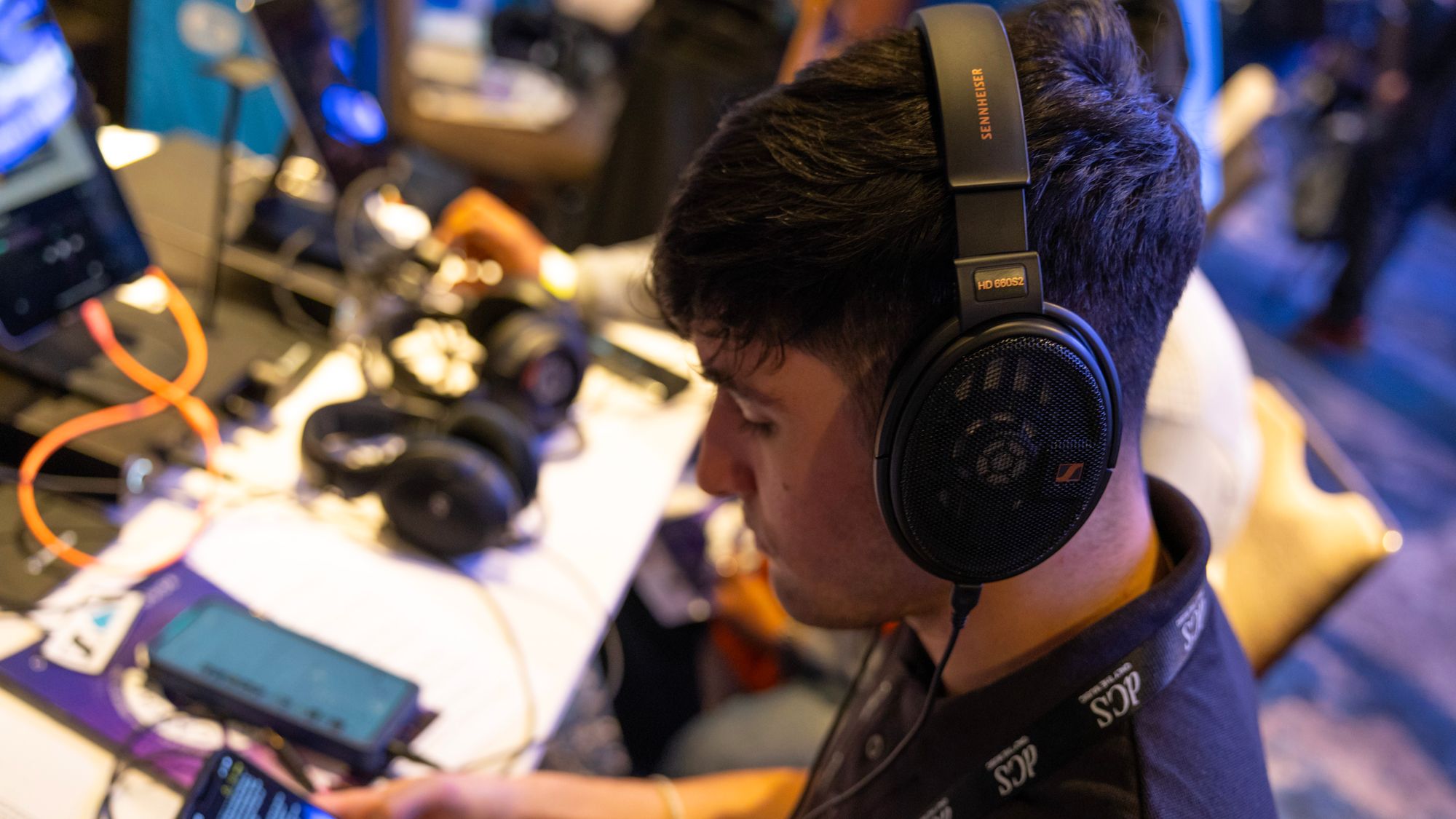
Sennheiser HD660S2
I just don't see the point. My complaints from the original 660S2 remain: They worsened the midrange of the "accurately-tuned midrange" headphone, added a modicum of bass extension, and made the treble (surprisingly) much more papery sounding... and then thought charging double was a good idea.
I really just have no idea who this headphone is for. The casual audiophile listeners who would usually vibe with this kind of signature would still be better served buying Focal Elex or even Hifiman Edition XS at this price (or even HD600). The critical listeners are likely going to prefer HD600 for it's more incisive midrange and more texturally-nuanced treble. If there's any praise that can be given to 660S2, it's based on two things.
The first is that it definitely sounds more open than HD600/650, and I think overall this design likely has a lower overall acoustic impedance/less damping than the older entries to the lineup. The second is that it has a smidge more bass.
Unfortunately these "improvements" don't come in isolation; they come at the cost of being a worse overall headphone. My enjoyment of the HD600/650 really don't have anything to do with openness, or how much bass they have, and I gather it's the same for... basically everyone who loves them.
We (my co-writers, my friends, my community) love HD600 and HD650 because they have the best stock midrange of any headphone series.
I have no idea why Sennheiser keeps iterating on this driver/design that was already a step backward from its predecessors 4 years ago, or why they charge(d) so much for something that can't even get midrange tuning as accurate as its less expensive predecessors.
All HD660S2 has done is convince me they need to move on and leave the 6 series alone, and stop reserving spots on store displays and shelves for HD660S2 that would be better served by having an HD650 occupy that spot.
Audeze Maxwell
I had pretty high expectations going into hearing Maxwell for the first time, and somehow... they were actually exceeded.
The stock tuning was lovely, if a bit warm and "safe". It was reminiscent of a less cuppy, more midrange defined, but less sibilant AirPods Max.
Actually, I wish AirPods Max was tuned like this. I couldn't find a single track that made it sound outright bad.
Vocals in particular were a standout on Maxwell. Male vocals specifically sounded big, warm, but never occluded or muffled. Always intelligible, but I didn't notice any shout or major sibilance issues in my brief testing.
The build was sturdy, and comfort was also excellent on my head. Though they're a bit heavy, the suspension strap is comfortable, and actually far enough from the headband unlike all of their other headphones! It's also wide enough front-to-back to distribute weight pretty darn well.
The built-in features—onboard & customizable EQ, easy Bluetooth pairing, an insanely good sounding microphone—are nothing short of being the best package of QoL features on any wireless headset yet...
...and the price is only $300?
Sheesh. Absolutely remarkable. Market breaking, in fact. This thing is basically the only headset worth getting at this point, and the price makes it impossible to ignore for both gamers and audiophiles. It might be the best sounding closed back under $500, period. No notes, Audeze. Well done.
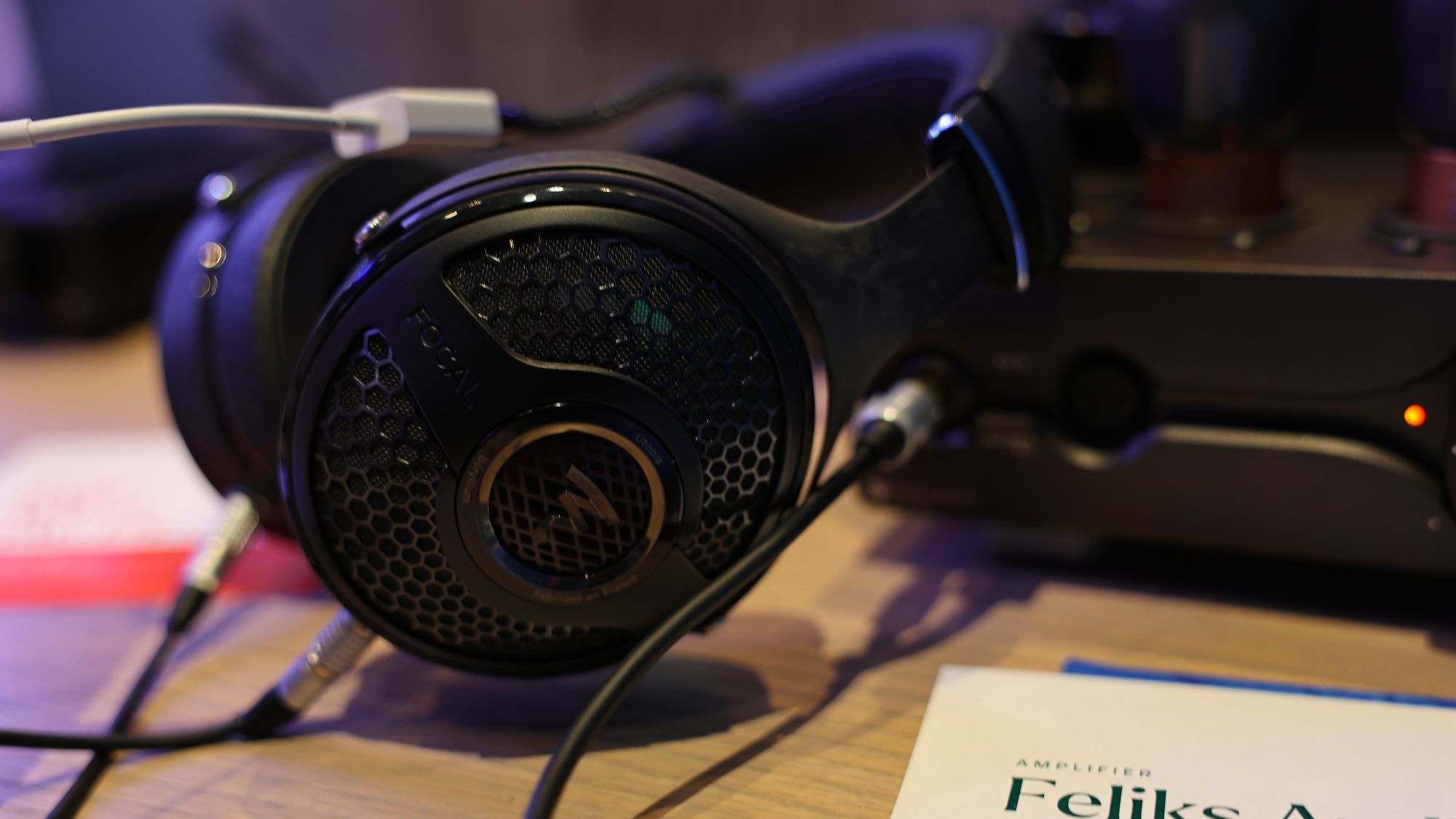
Focal Utopia 2022
One of the biggest disappointments of the show for me, unfortunately. Instead of sounding like they just massaged one or two of the problematic peaks on the OG Utopia, it sounds like they just applied a 2-3dB low shelf starting at 3kHz, which results in the whole presentation sounding way too chesty, lumpy and swollen.
I really, really would've preferred something that kept more of the intensity of the original, but was just a smidge darker at one spot (~10kHz) in the mid-treble.
I just don't hear it having any of the incisiveness, punch, texture, or viscera of the original Utopia, and frankly it's shocking to me that Focal thought this was a step forward from what was arguably the most dynamic, textured, and technical dynamic driver headphone in existence.
It erases all of the good things, while keeping the metallic timbre and making the tuning worse.
OG Utopia remains superior overall, and frankly so does the Aurorus Borealis.
Dan Clark Audio EXPANSE
I got to hear EXPANSE for the second time at the show, and all it did was confirm what I already know... Dan Clark's modern headphones are weird.
I don't know if it's the tuning, the massive amount of acoustic impedance seen by the drivers, or something else entirely, but EXPANSE in particular is one of the eeriest headphone experiences I've ever had.
The upper midrange around 4-6kHz in particular has a weird bite to it that makes vocals and instruments all sound kind of grainy and hashy, but—as is the norm for DCA—the EXPANSE lacks significantly in dynamic intensity to match. Things sit in an uncanny valley of being quite well tuned on paper, but also less fun to listen to than even AKG's K371.
A more apt comparison than you may think, because EXPANSE also happens to be an incredibly closed-in sounding headphone. I assume this contributes to the strange feeling I had where it felt like the tuning didn't match the acoustic characteristics of the space my ears resided in. It's probably clear by now, but I'm still struggling after all this time to really quantify what the heck is happening with this headphone.
That being said, EXPANSE might just be the most comfortable pair of headphones I've ever worn, so if you really prioritize that, it may be worth it to you.

Audio Technica AT-W2022
Oh man...
Definitely, and I mean definitely my favorite headphone of the entire show.
As a fan of both dark signatures as well as good closed backs, it's almost as if this thing was destined for me (in another life where I'm rich, of course). It's a super fun and clearly boosted bass tuning, but the center midrange is also slightly elevated, so it's likely best referred to as a "W" shape.
Treble is completely and utterly bereft of sibilance, but still normal-enough sounding to not earn the descriptor of "dull."
While it is also dynamic/punchy as hell, a potential downside here is that W2022 is not particularly resolving. I did notice when listening to Fleetwood Mac's Dreams that Stevie's little "mmm-mmm-mmmm" in the beginning of the track was basically impossible to hear. I had to turn it up to deafening levels to hear this little detail.
However... this might also be my favorite thing about this headphone. You can just turn it up, and up, and up and it never even gets close to being harsh or sibilant.
I can lob tons of praise at this thing, and it deserves it. However, they are expensive. I cannot emphasize just how little I desire to spend $9000 on a headphone. But man, I'd take this over Susvara, 1266 Phi TC, Utopia, HD800, or basically any other flagship just because of how much fun it actually made listening to music. Hopefully, they come out with a cheaper version soon because I'd rather listen to this than basically all other headphones.
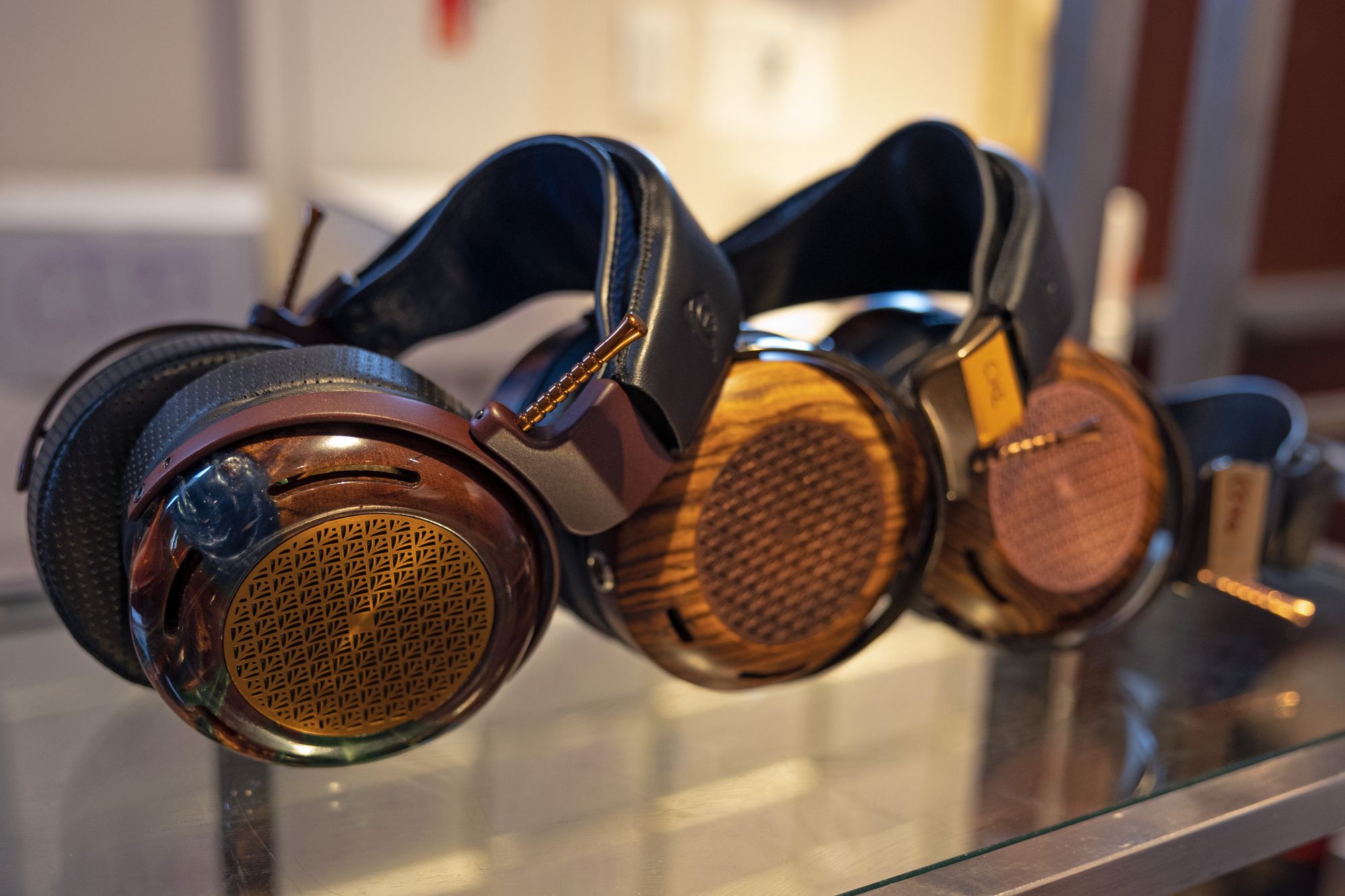
ZMF Atrium
There is a tasteful, cozy midbass elevation, but bass here is somewhat lacking in texture for my taste. Perhaps the big surprise here (for me, who's only heard one ZMF headphone prior) is that the stage is pretty excellent. Overall, the mids are relaxed in a way I like, the treble is relaxed in a way I like, and my only complaint is that it doesn't seem especially technical aside from soundstage distance. I quite like this headphone, though.
ZMF Atrium Closed
Upper midrange was quite a bit recessed on this, and it has a kind of disjointed timbre. The stage was smaller than the Open counterpart, but not as much as you may think. Dynamics in the macro-sense were nice enough for me, but the smaller background elements were kinda blurry sounding. The upper midrange recession unfortunately made mid-and-upper treble a little too splashy for me, by contrast. Not terrible, but not as impressive as I'd hoped given how much I liked Atrium.
ZMF Auteur Classic
Much more midrange/treble focused than either Atrium model. It's a sharper presentation than I’d like overall. It doesn't strike me as especially dynamic, and it also doesn't strike me as a “timbre” headphone. The more forward midrange in addition to the very apparent 6kHz peak means that frankly, I'm not much of a fan of anything above 1kHz here. But it does sound “neutral,” if you're into that sorta thing. Good stage on it t00, which I wasn't expecting from this kind of tonality.

Grell Audio Prototype
One of the biggest surprises of the show was that Axel Grell (of Sennheiser 6x0, 8x0 fame) was showing off his new prototype: a ~$300 open back collaboration with Drop.
Upon first inspection of the (3D-printed, prototype) chassis, the first thought most would have is "What the hell, that driver is basically all the way to the front of the housing!"
The basic principles of this prototype are:
• Biocellulose dynamic driver
• Extremely leaky/open chassis
• Very frontally-oriented driver placement
What I heard was "prototype 1" which had the least damping (nothing in front of the driver).
The bass sounded unnaturally boosted, likely due in part to being a biocellulose dynamic driver in a very leaky chassis. The midrange reminded me of HD560S; a little hot in the 1kHz and 4-5kHz presence areas, but the ear gain overall was seemingly all there (unlike the HD800 that this design initially reminded me of). The treble was... pretty bad. The treble character is basically the worst parts of HD800 + TH900 put together, and if there's any area that needs work, it's definitely this.
The stock tuning here was still more to my taste than HD800 in stock configuration, but to be clear, that's not a high bar. More importantly than that though, I heard potential.
I've never heard a headphone anywhere near this price deliver a package of technical performance reminiscent of HD800... until this headphone. The closest I'd ever heard was actually Philphone, which is neither widely available nor what I'd call a "neutral" signature (though it is excellent re: technical performance).
I'm hoping Drop and Grell can refine this design and fix the tuning (without ruining the technical performance), because if they do, this headphone may just be a giant killer. For now though, it is very clearly a prototype and needs a lot—let me repeat—a LOT of work.
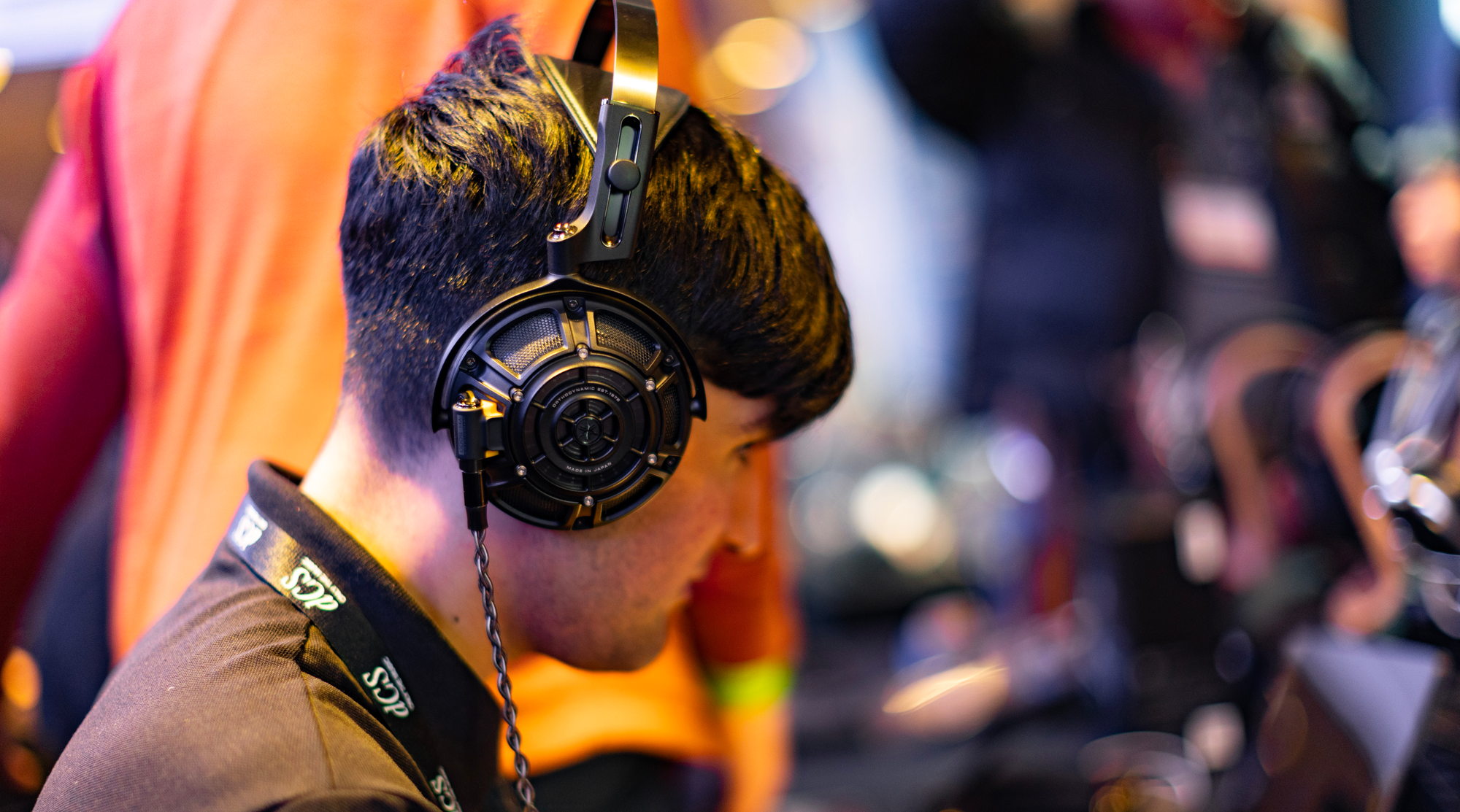
Yamaha YH-5000SE
I (like Kyle) am a huge fan of the original Yamaha orthodynamic headphones I've heard, and I was very excited for this headphones' release.
And after all of this anticipation, I can confidently say that what Yamaha has delivered is a uniquely terrible headphone.
Bass is omnipresent, yet lacking in mass, texture, dynamics, intensity, you name it. Midrange has almost completely disappeared. Textural overtones are kaput, intelligibility is nonexistent. The treble is about as ringy and unmitigated as I've heard in a planar, while offering nothing good in the rest of the audible spectrum to anchor yourself to while you get battered by the splash.
It is—and I cannot stress this enough—an absolute nightmare. Shame too, because it has redeeming qualities.
In my opinion, it's the coolest looking headphone on the planet. The build feels sturdy, in that Sennheiser "will outlive you" sort of way. The comfort is absolutely exceptional, too.
But a $5000 headphone needs to at least sound okay... and this is pretty far from it.
Campfire Audio Andromeda Emerald Sea
Unfortunately but perhaps predictably, I felt Emerald Sea was a big swing and a miss. The bass shelf was gargantuan and ill-placed, midrange definition was nowhere to be found, and the treble retained the same ringy and grainy character that was present on the 2020 model when I heard it a few years ago. Overall, I don't see any improvement over the predecessor. If anything it seems like a total step backwards.
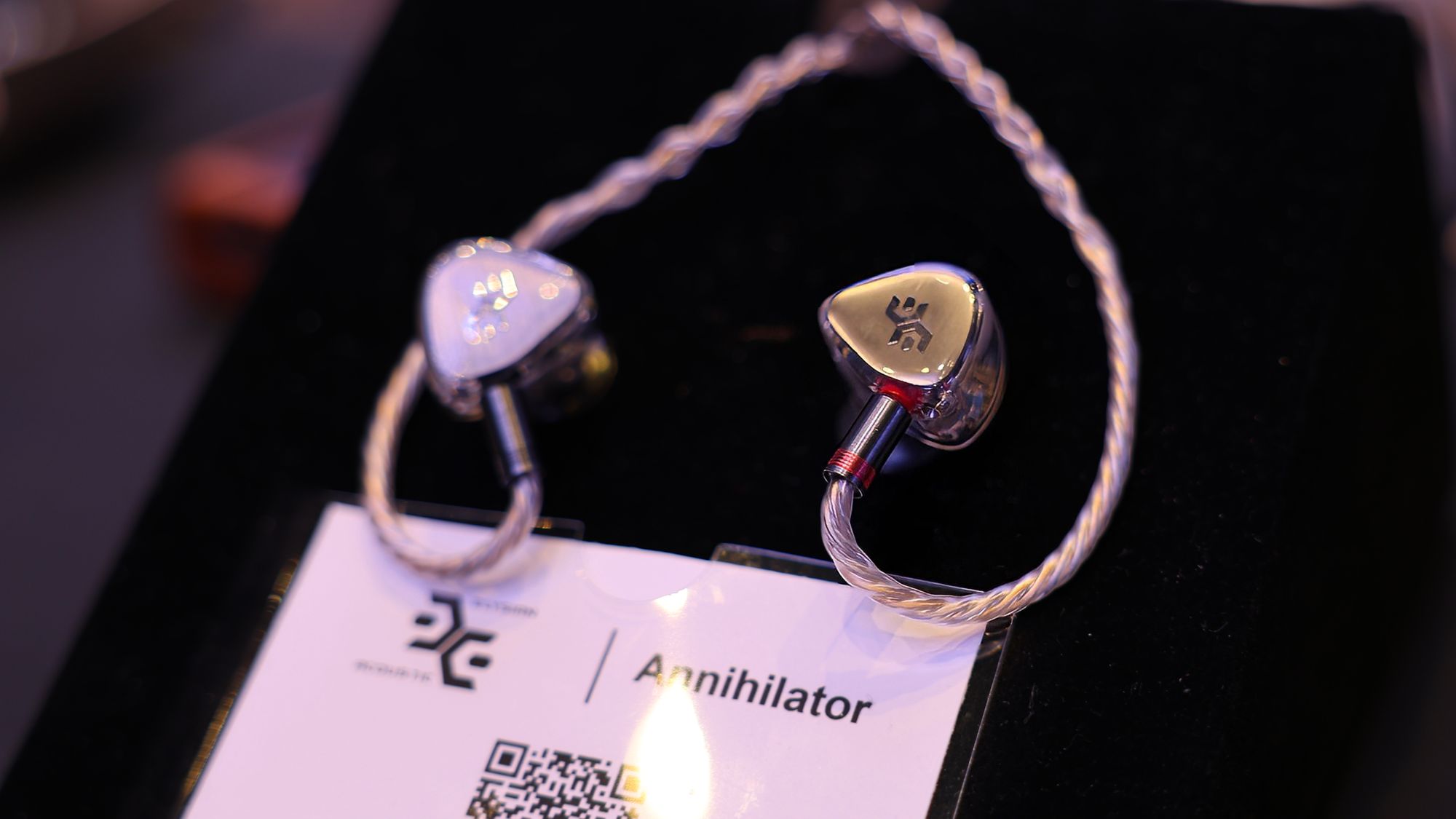
Elysian Annihilator
Perhaps another casualty of expectation, I was not a big fan of the Annihilator. The bass was elevated in a nice spot but the character of the bass was frankly my biggest disappointment. It sounded like a TH900 with 2-ply toilet paper stuffed in front; big, elevated, but lacking in texture. The midrange was well-tuned, if a bit center/upper-midrange rich for me.
The treble... well, I'm more treble sensitive than most, so it's possible that readers will enjoy this aspect of Annihilator more than I did. Frankly, it reminded me of CCA CRA, in that sibilance was pushed forward unnaturally enough to make the entire thing sound defined by its treble, to the detriment of what otherwise seems to be a competently tuned and decently performing IEM.
It just didn't strike me as natural. Instead of doing what I gather was "the point" here for me—giving as much extension as possible, perhaps in an effort to improve perceived resolution—instead I was given a whole bunch of treble that did the opposite and masked meaningful information in the rest of the audio band.
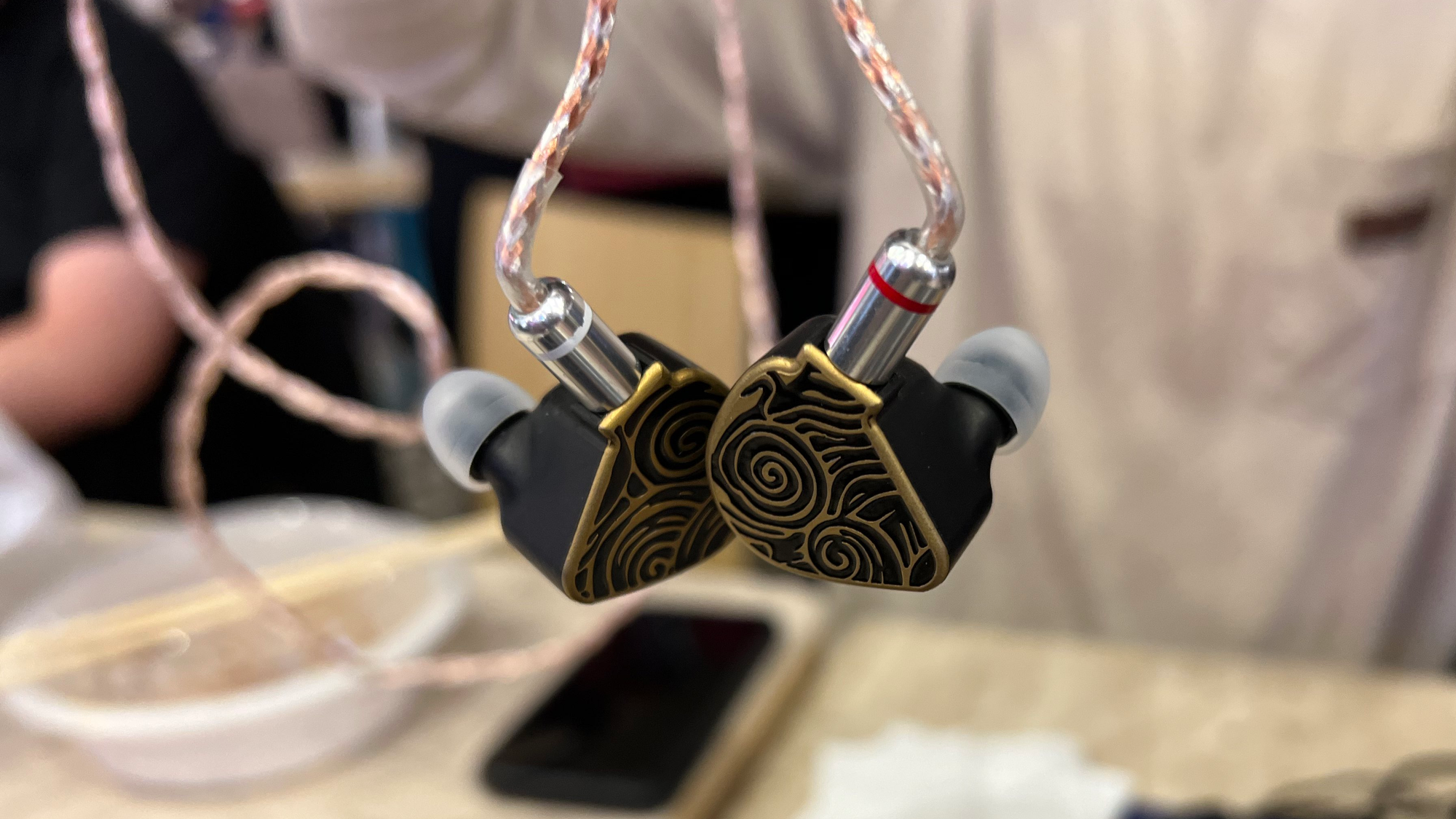
Subtonic STORM
I actually heard Storm in a Flushing food court, which I felt was a much more fitting circumstance (certainly more similar to other peoples' first experience hearing it) than hearing it on the CanJam floor. My Singaporean friends know what I mean :)
Unfortunately, I wasn't nearly as big a fan of Storm as basically everyone else I know who has heard it.
The midrange was a little too lean for me, and the treble presentation had a little too much heat in the presence region around 5kHz and a little too much lispiness at the tippy top. Nothing sounded outright bad, but I am simply not as head-over-heels for Storm as many are (and to be clear, I could very well see that being a "me" problem).
That being said: it's probably the most dynamic and explosive IEM that I've ever heard. Hearing it out of FiiO's Q7 portable DAC/Amp on my favorite test tracks for dynamics was frankly shocking. If I wanted a "slam" IEM and had tons of disposable income, this is what I'd be buying (and I'd be buying a Q7 with it because it pairs extremely well).
Unique Melody Mentor Multiverse
Mentor Multiverse is slightly too bloated, and the treble is kind of lispy in that similar way to the MEST lineup. Honestly, probably the worst thing is that it just didn't seem noticeably technical to me. Kind of just sounded like a normal IEM, with not much worth writing home about except the price. I'd be open to the possibility that I'm wrong about this aspect in particular (show conditions and whatnot) but I just really didn't think it was anything special.
Unique Melody MEST MKII/III
Getting to hear MK3 right up against MK2 probably wasn't a good idea for MusicTeck. MK2 was way less cloyingly soft and the silken characteristic to the treble was better integrated with it's midrange. MK3 by comparison sounded like there was a massive shelf stuck way too low in the range to offer the midrange any meaningful warmth, and the treble was just too forward and made the already contentious midrange seem too distant and incoherent.
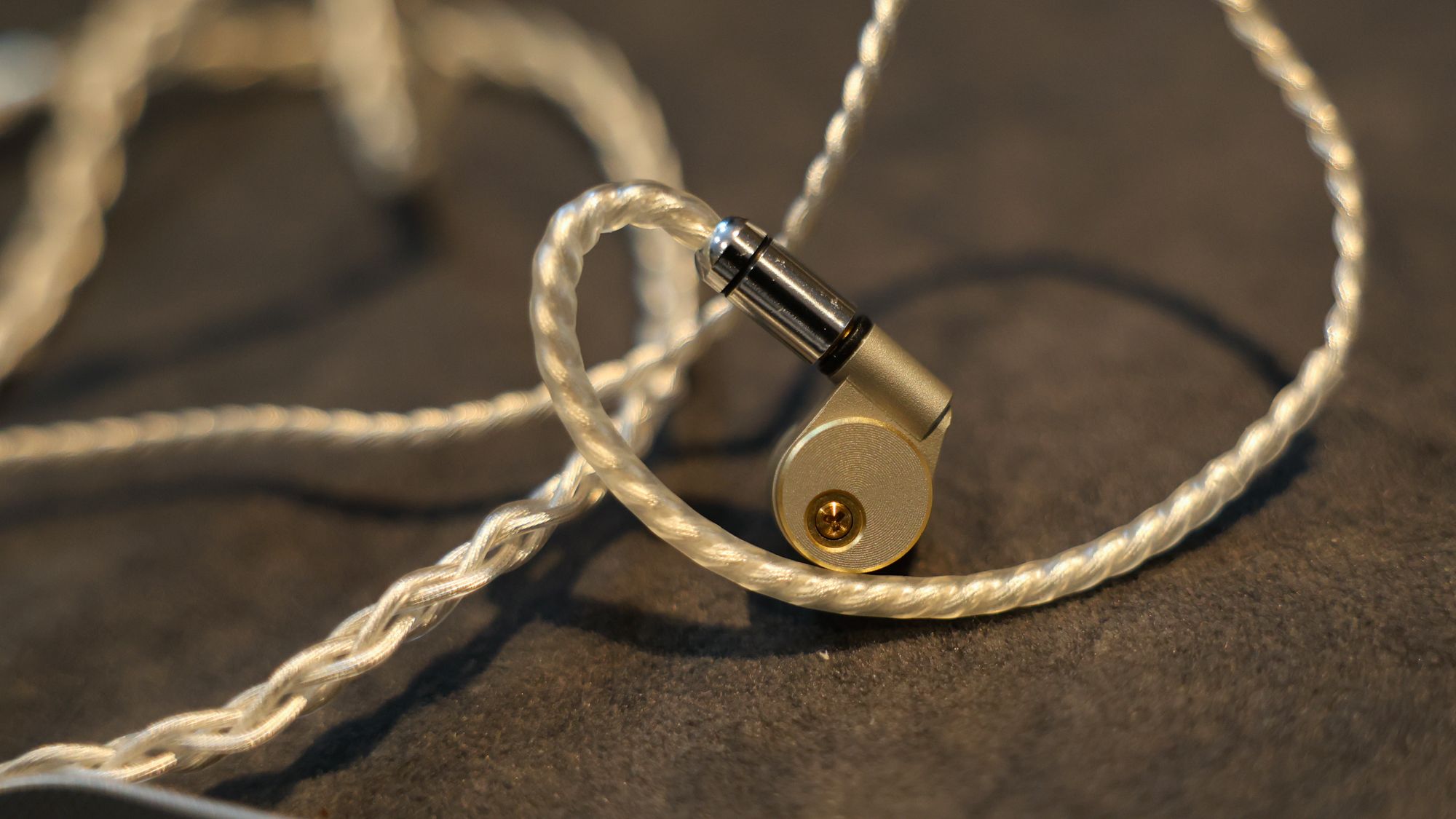
Ucotech RE2
Another big surprise of the show. Absolutely no bass elevation, as it's an open design, but surprisingly dynamic and textured for something around $100. Basically like if an Etymotic ER2se was open-backed, had more treble, and had much better "PRaT".
I need to be clear: I don’t like the tuning at all, but I can’t deny that it's easily the most technical single DD I’ve heard at its price. I wouldn't ever recommend it to newer audiophiles given its extremely forward/aggressive tuning, but for those of us looking to be wowed by something that isn't just another Harman or IEF Neutral-tuned set, RE-2 is a pretty cool IEM.
Vision Ears PHöNIX LE
I tried the red version. This one was interesting, but nothing I'd call especially "great". It had a hashiness to the treble, which made me think it could have a poorly implemented EST tweeter setup (but it didn't). The 4-6kHz presence region had a weird choppiness there too. Midrange seemed a little 1-2kHz dipped, which was actually nice and helped the stage seem less oppressive than it might otherwise, but the upper mids had a strange glare. Bass was a little too big and doofy/uncontrolled, but it slammed nicely. Images actually sounded really large in a way I wasn't expecting, which was a nice trick. Not sure I'd say it's worth the price, but it was at least interesting.
Letshuoer EJ07
A little more V shaped than expected (in a fun way), but overall the integration from bass to low/center midrange is a little too contrasty. Not as detailed as I expected, and honestly it just kinda just sounded like a “Harman with less 3-6kHz” IEM which frankly are dime-a-dozen these days. For this kind of presentation, I vastly prefer Helios.

Letshuoer Cadenza 12
Man... probably my favorite IEM of the show.
Bass was punchy and elevated exactly where I want; unobtrusive, yet doubtlessly present.
The midrange was honestly probably the best I've heard in a "flagship" IEM thus far (better than U12t). It had a proper downslope from the bass into the 1kHz area, while not being overly present in the 1-2kHz transition. 3kHz energy was right where I (and most IEF adherents) will like it, around 8dB.
My one nitpick was a 5kHz peak that kind of threw off integration between upper mid and treble, but after that area the treble was smooth, extended, and surprisingly, actually detailed! Fit in my ears was excellent. Cable was lovely. If I could walk away from the show with one item, it'd probably be ATH-W2022 or this.

Zähl HM1
I finally got to hear the HM1 on day 2 paired with the Weiss DAC and HD600. It is excellent. I think when THX positively refers to their amplifiers as "achromatic," I gather that this is what we all wish it actually sounded like.
I can't say I notice even the slightest timbral coloration here, as this is probably the most "neutral" amp I've ever heard. If I had to choose a direction it's colored towards, I'd say there's a slight bit of U-shape going on... but it must be very slight, if so.
Music is delivered naturally, cleanly, directly, and most importantly, very dynamically. It made my HD600 sound somehow larger, deeper, and more textured, while not placing any emphasis on one frequency range over the other.
The actual features are less useful to me (though the "soundstage" knob is interesting and novel). If I wanted a single amp to do everything and didn't need my car anymore, I'd buy this and never worry about amplification again.
Kyle
I've lost track of how many CanJams I've been to, but this year's CanJam NYC was a stark contrast to last year's. While last year felt almost sparse, there were almost too many people this year. While I never had to wait too long to hear anything, even the big-ticket items, there were quite a few attendees--I had to squeeze through more than a few crowds. It was exciting seeing so many people interested in going to a headphone show. Having been in the hobby for...too long, it has been interesting seeing CanJam transform from people bringing their own home setups to show off to a trade show, it is nice to see how accessible people like Sankar Thiagasamurdam (co-founder and current CEO of Audeze) and Axel Grell (formerly of Sennheiser, now focusing on new projects) are and how excited they are to engage with the community.
I will admit that I've been somewhat jaded by CanJam over the years: time and time again I've been excited by new products, only to be greatly disappointed. In the end though, the reason I go to CanJam is to see friends; the gear is always secondary. As my impressions of most of what I heard will show, that may have been for the best. Still, there's no replacement for actually hearing things for myself and forming my own opinions.
Campfire Audio
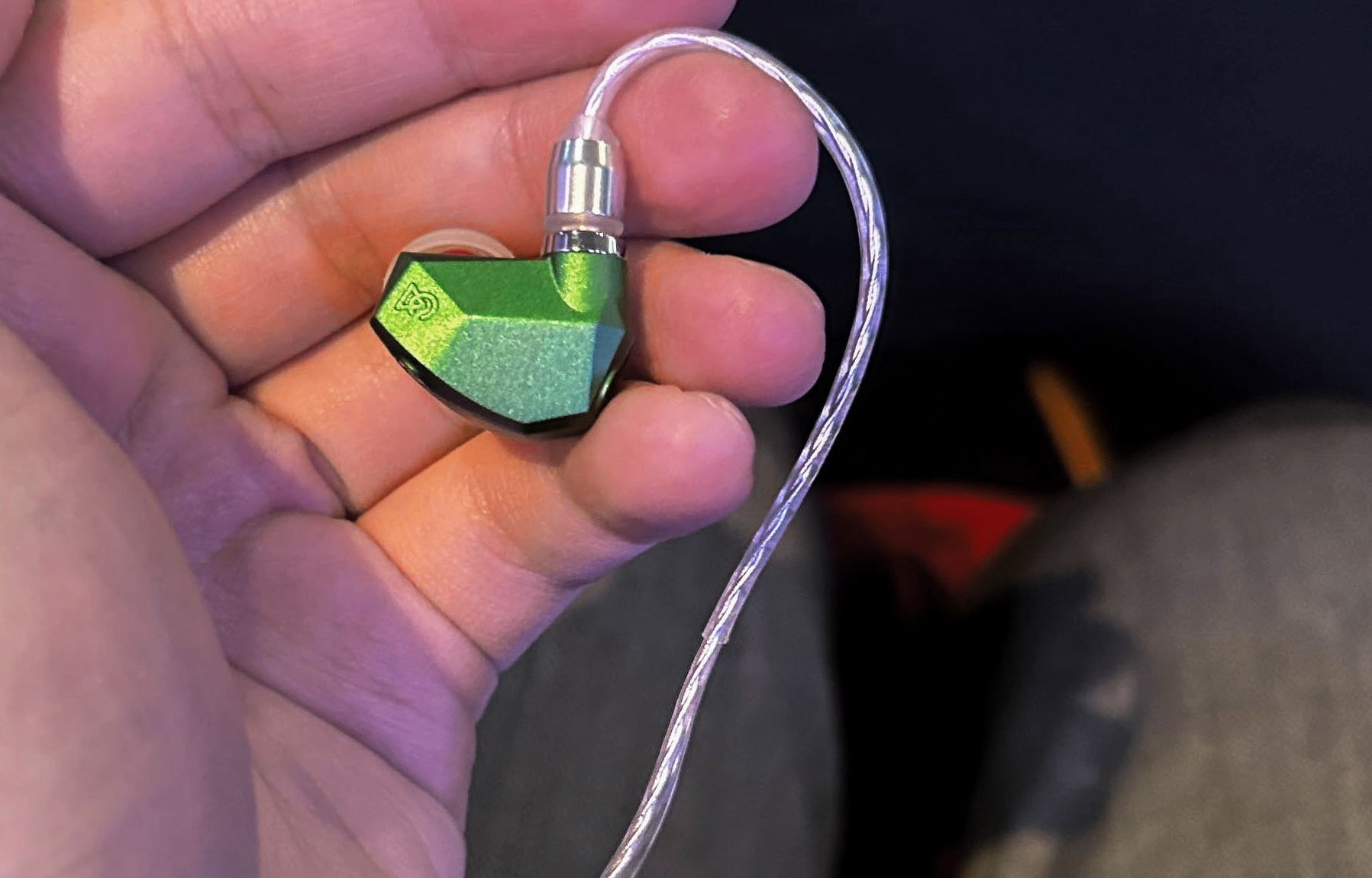
Andromeda Emerald Sea
The original Andromeda was the reference around the time it was released. Unfortunately, since then, their lineup has veered more toward coloration than absolute quality. The Andromeda Emerald Sea takes a much bassier, thicker path than I recall the original one having. Midrange sounded shouty with an emphasis on overtones and a hollow quality. Attack sounded even limper than any electrostatic headphone I've used. Bass was lacking in texture basically completely. Sounds like an entry-level IEM.
Dan Clark Audio
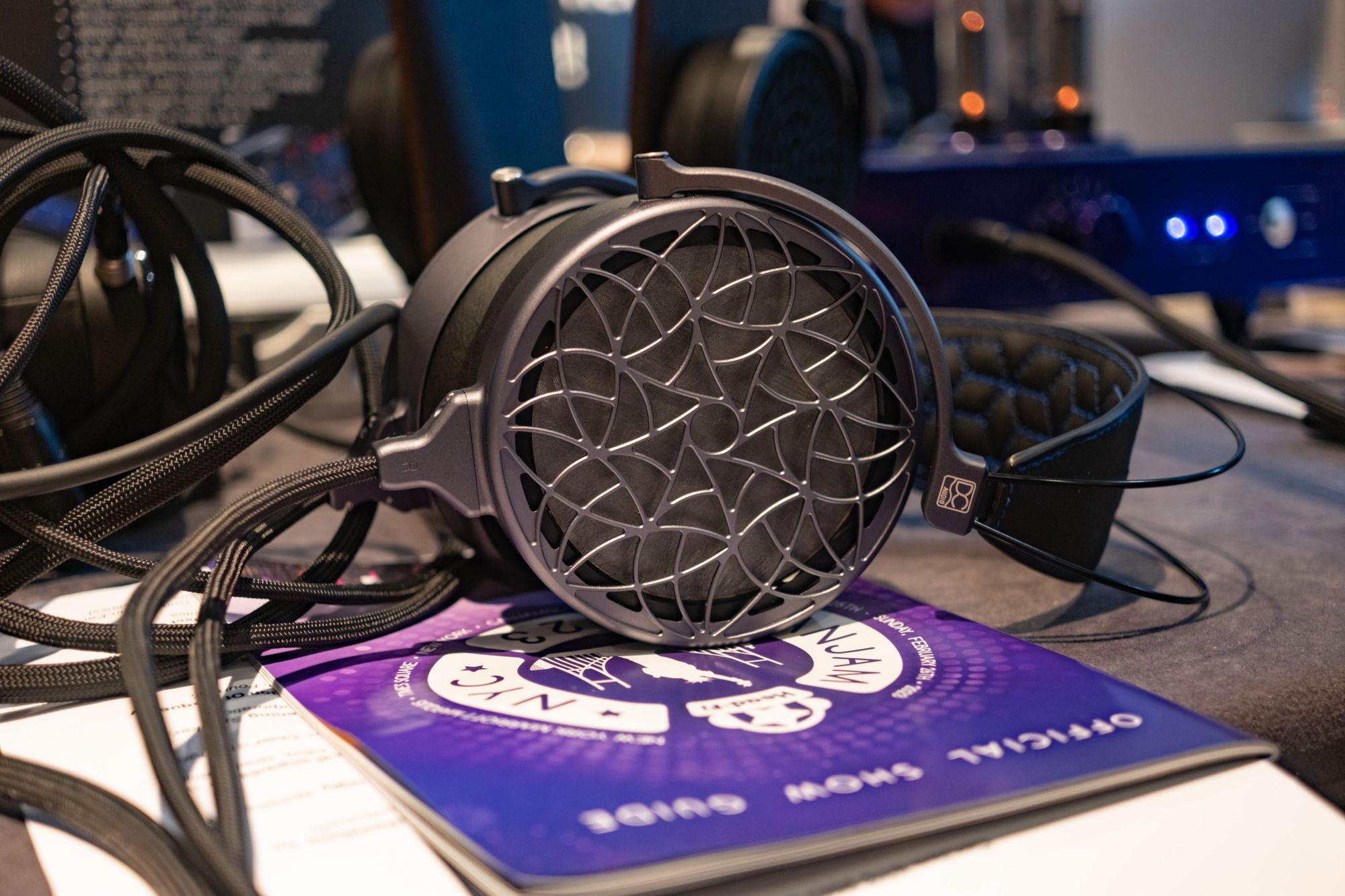
CORINA
I've heard the VOCE a few times before and no matter what I've used it in, it's sounded miraculously terrible. DCA managed to harness the nostalgia of the original earbuds that came with iPod earbuds and charge $3,299 for the privilege. Thus, the CORINA excited me--there's no way they could make a worse product. Thankfully, the CORINA is much more listenable, but somehow DCA went the other direction with the CORINA. It actually sounded rather stuffy out of both the Headamp Blue Hawaii SE and the unreleased Headamp Grand Cayman prototype. They added the sense of thickness that other DCA headphones have, but lacked the speed I'd expect from an electrostatic headphone. I would forgive lack of note weight, as that's something electrostatic headphones just don't do and give the listener speed in exchange, but the CORINA just felt sluggish to me, like a worse version of the EXPANSE, with, thankfully, much less bass. The midrange sounded recessed, almost cavey. Still, better than the VOCE, so I have to give DCA some points.
EXPANSE
I used an EXPANSE at the MA Schiit meet late last year and felt it was quite compressed in both dynamics and soundstage with a bizarre tone and annoying treble. I wanted to try another just to see if variance might play a role. It didn't.
Dekoni
Cobalt
I hate to say it, but this was the worst headphone of the show by far. The Cobalt, for those who have missed the announcement, is a collaboration between Hifiman and Dekoni. It is a closed carbon-coated dynamic headphone and is priced at $499. It was an insult. I've yet to hear a good closed headphone from Hifiman and I've never heard much praise for their dynamic headphones, so I wasn't expecting a world-beater. However, I don't think I've heard a headphone that butchers mids so much as the Cobalt does, at any price. That says a lot, because due to my morbid curiosity, I've owned a lot of whiffed headphones, like the Ultrasone Edition 10, Flare Audio R1, over a dozen Grados, a TakeT H2+, and the list goes on. As terrible as all those were, none of them hold a candle to the absolute disgust I felt listening to the Cobalt. Somehow everything sounded like it had sibilance in the fundamentals. It almost sounded like distortion, but not quite as obvious. The entire headphone sounded like a cave. I would rather never voluntarily listen to music again than use the Dekoni Cobalt I used one more time.
Eksonic
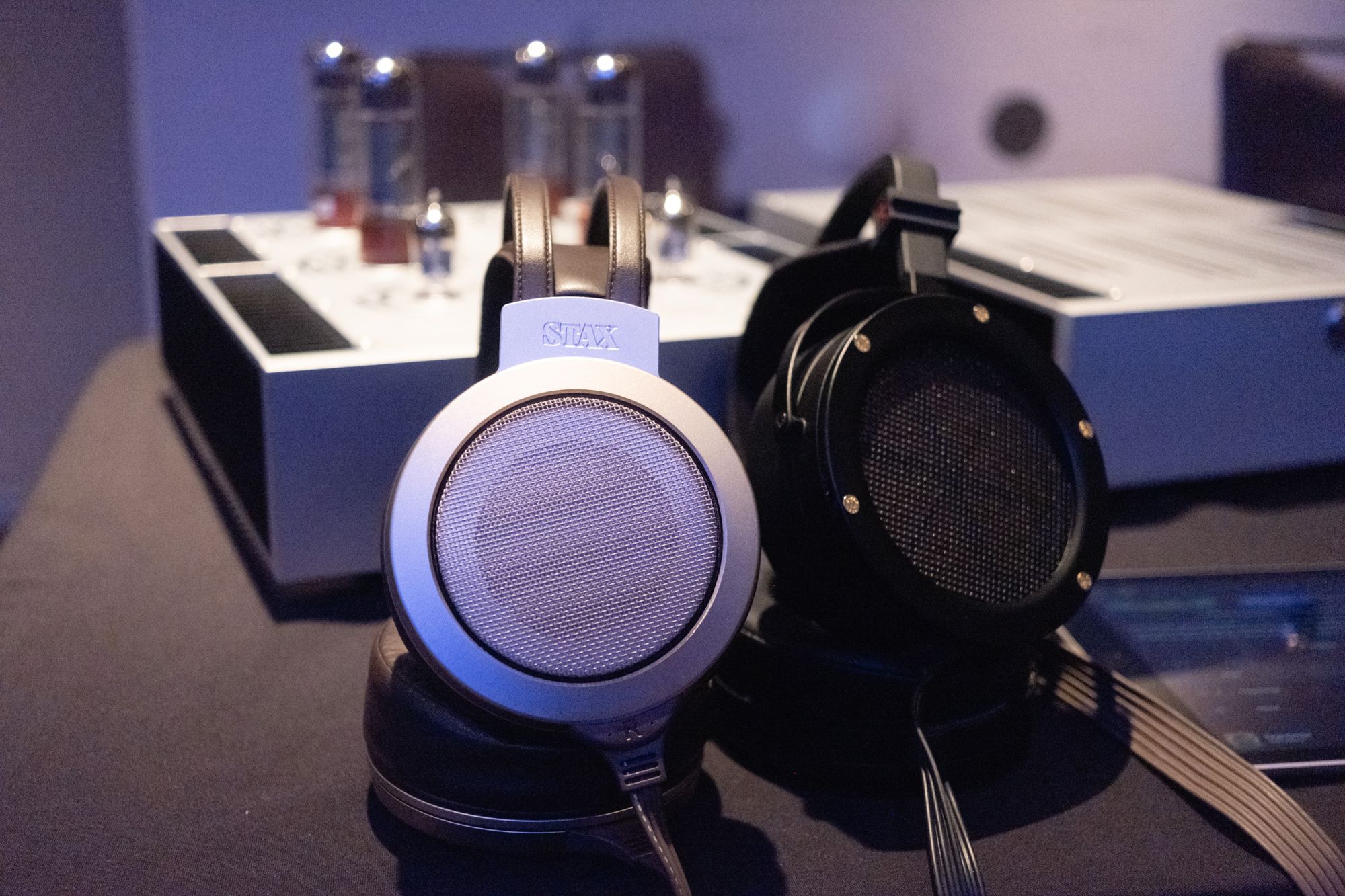
T2
Eksonic has refreshed the legendary Stax SRM-T2, which is infamous for its instability. I brought my ESLabs ES-1a to compare it with my memory of my home system (Exogal Comet>darTZeel NHB108 clone>Eddie Current Zana Deux>Mjolnir SRD7). This, obviously, isn't a particularly scientific comparison because I have to rely on auditory memory, which isn't the most reliable, but even then, I felt like I heard things with the T2 that I haven't been able to achieve with my home setup. Vocals sounded more tactile, dynamics came to life, to an extent, and the midrange that typically annoys me sounded less strident. At $14,000, I don't think I'll ever be able to justify buying one for myself as my ES-1a isn't my main headphone as it is, but it was certainly an experience.

Elysian
Annihilator
The Annihilator is an IEM I've wanted to try for quite a while now but never have had a chance to try. The praises about the Annihilator's treble do ring true--while it was quite bright, the extension helped remedy a lot of the "closed in" sound I feel with a lot of the IEMs. Midrange tone was more to my preference than many other multi-kilobuck IEMs I've heard like the Aroma Audio Jewel, Oriolus Traillii, or Vision Ears Phönix, but it was missing that last bit of decay and body. Bass was the biggest disappointment of the Annihilator, though. I used both the Annihilator and Diva with a Sony WM1Z so it's possible that there are some source matching issues, but the bass sounded like it was from a completely different, much cheaper IEM. There was plenty of bass in quantity, but it lacked the sense of attack that the midrange and treble provided, so it sounded almost like pairing a $200 electronics store subwoofer with a high-end bookshelf system. It was really disappointing to hear, as I was a big fan of the Annihilator otherwise. Maybe it'll sound better with the Fiio Q7 I just bought...
Diva
Diva took the Annihilator's limpness in bass and used it as a central tuning theme. It sounded fine, just...underwhelming and boring to me. Treble lacked the specialness of the Annihilator, which is expected for the price difference, but the Diva sounded like a much bigger downgrade than the price delta would suggest.
Grell Audio
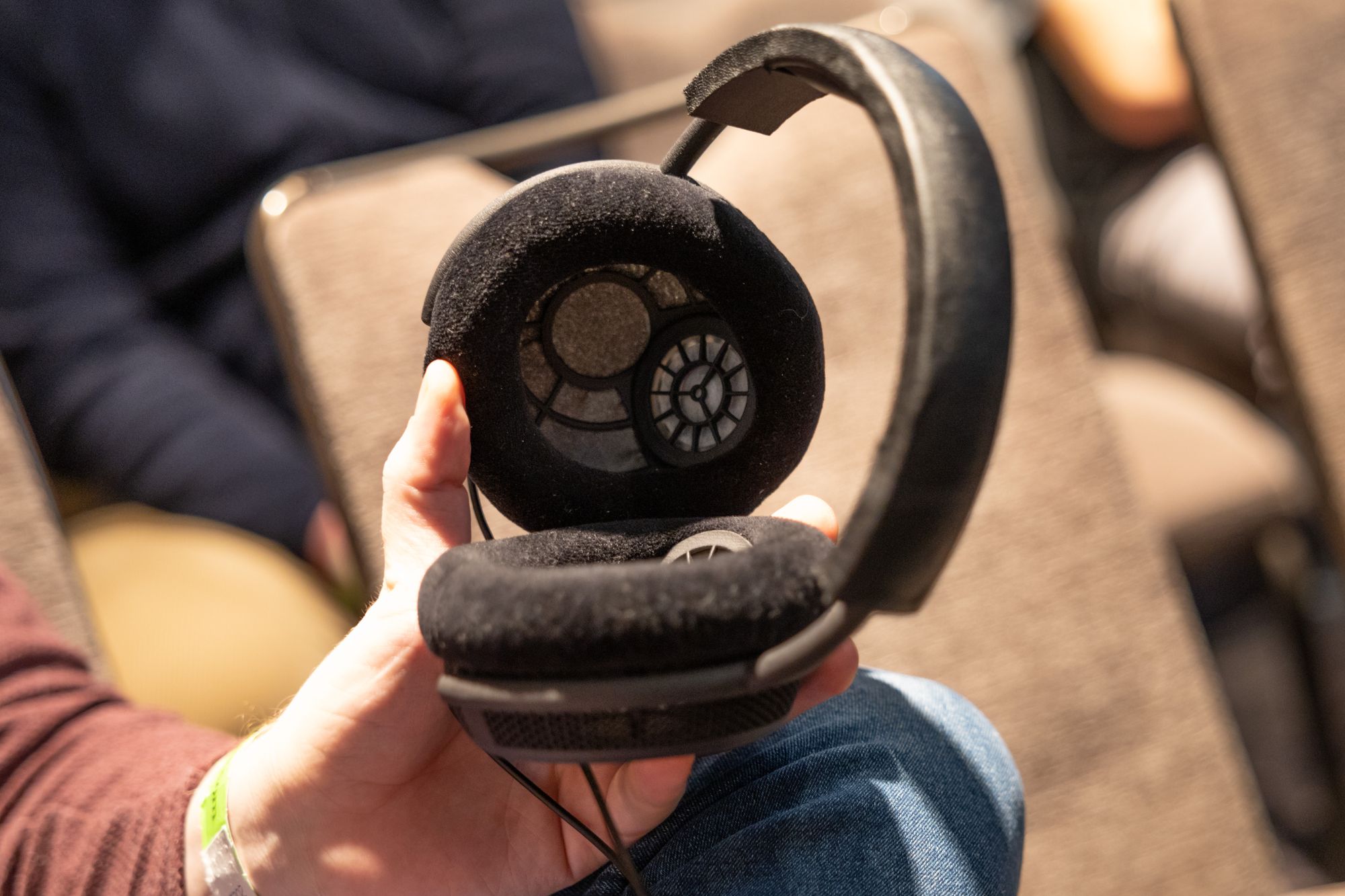
Prototype
I heard what was allegedly the worse prototype of the two brought to the meet. It had a very weird, pinched nose midrange. Transients were decent for the price. Soundstage did sound rather wide. I hope they fix a lot of this because I can maybe see a market for this.
Hifiman

Audivina
The nicest thing I can say about it is that it sounded less wonky than Cobalt. Off the EF400, the Audivina sounded like like a phone speaker with bass. It was insanely tinny.
Shangri-La Sr
The Headamp room had a Shangri-La Sr for demo with the Grand Cayman, which was very exciting to me because I've been told time and time again, that they sound better off an amp that isn't the Hifiman amp. It's been long enough since hearing it for the first time that I don't know if that's necessarily true, but I do know that the best word I can use to describe the Shangri-La Sr: Unpleasant. I recall having immense discomfort with the incredibly hyped 3k and low treble the first time I heard it and this time is no different. I don't think it sounds nearly as jarring as a lot of other things I heard at CanJam this year, but the asking price is...rough. It's just a really bright and harsh headphone that mutilates midrange tone, but I guess it's detailed.
Letshuoer
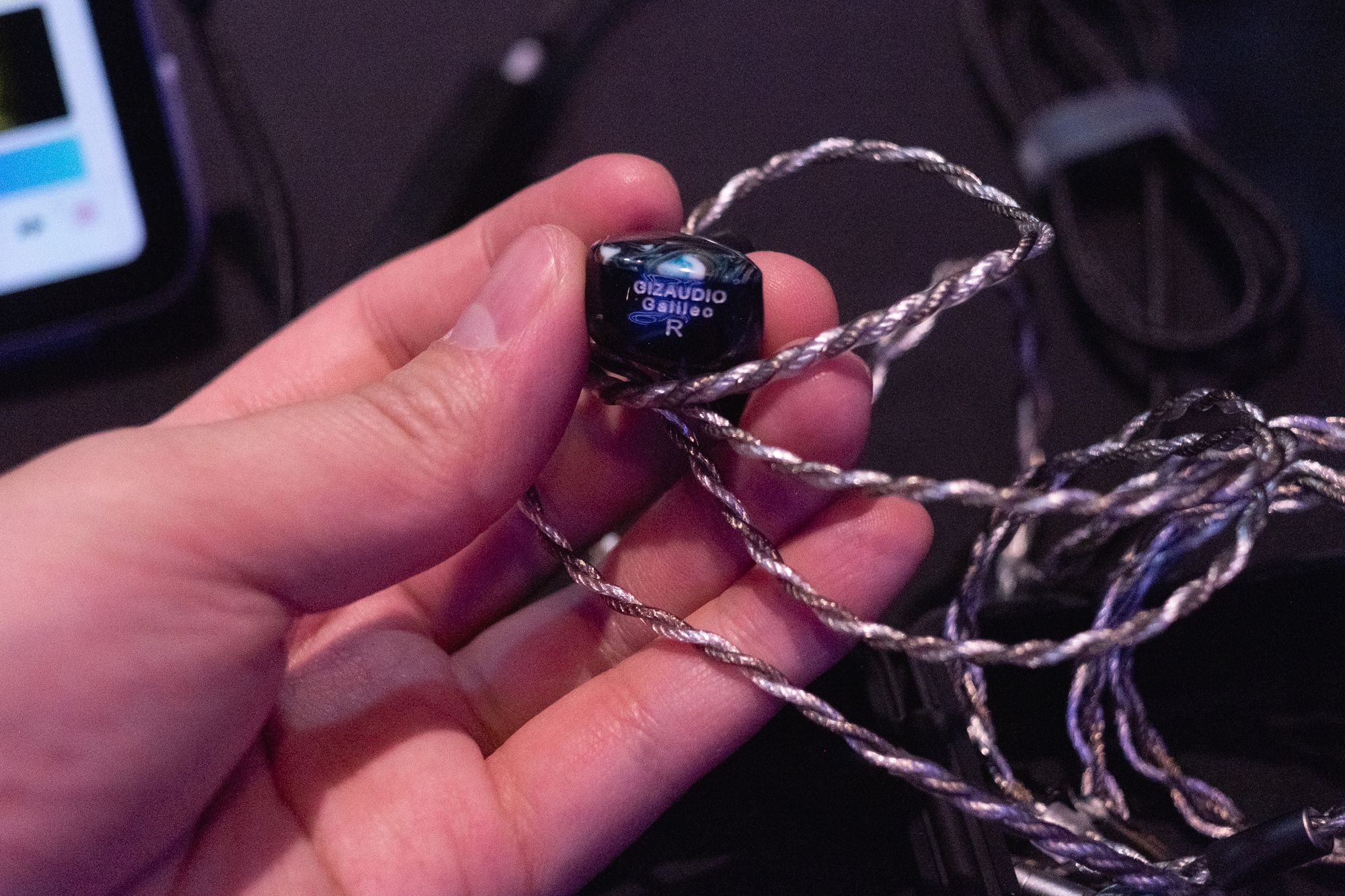
Galileo
The Galileo was the cheapest thing I used at CanJam and it was probably in the top half, maybe higher, in terms of enjoyability. It was definitely too rolled up top for me and seemed to sound congested easily, but overall, not bad for $109. Midrange tone is helped by the warmth of the FR, somewhat masking the deficiencies of decay but I would like a little more midrange presence for my taste. But, for something that would be easy to listen with for hours, sure!
EJ07
What stood out immediately was that it was too bassy for me, someone that tends to like a bass shelf in IEMs. This made the rather thin midrange more obvious, showing their rather off-sounding timbre. Imaging was decent. For the $899 I'd want a little more refinement in the midrange but overall it was a fun listen.
Cadenza (Prototype)
I didn't get a chance to try the retail version, but I was offered a prototype. It felt like opening a window, coming from the EJ07. Bass was at a much more reasonable level and actually sounded somewhat dynamic. Center midrange was a slight problem spot for me but was told that the midrange was the main thing they tried to fix, so it's possible they fixed that with the final version. Great IEM; considering the market, the rough target price makes sense to me.
Melodic Artification
Eclipse
Midrange was a bit recessed to me, but the bass was super fun and rumbled quite hard. After quickly looking up what the driver makeup is a dual dynamic driver design makes sense to me. Slightly muddy and dark overall but it was pretty fun. It did congest a bit much for me considering the price, but it was a neat experience.
RAAL
CA-1A
I'll admit I've seen measurements and didn't have high hopes but the end results were surprising: the "open" pads were less to my preference by a wide margin. The midrange was much more strident and uncomfortable, then dropped off a cliff so it sounded like a speaker with a broken tweeter. The "closed" pads, while midrange recessed, still sounded more coherent to me. With both pads, treble was much harsher than the measurements led me to expect. Disappointing.
Sennheiser
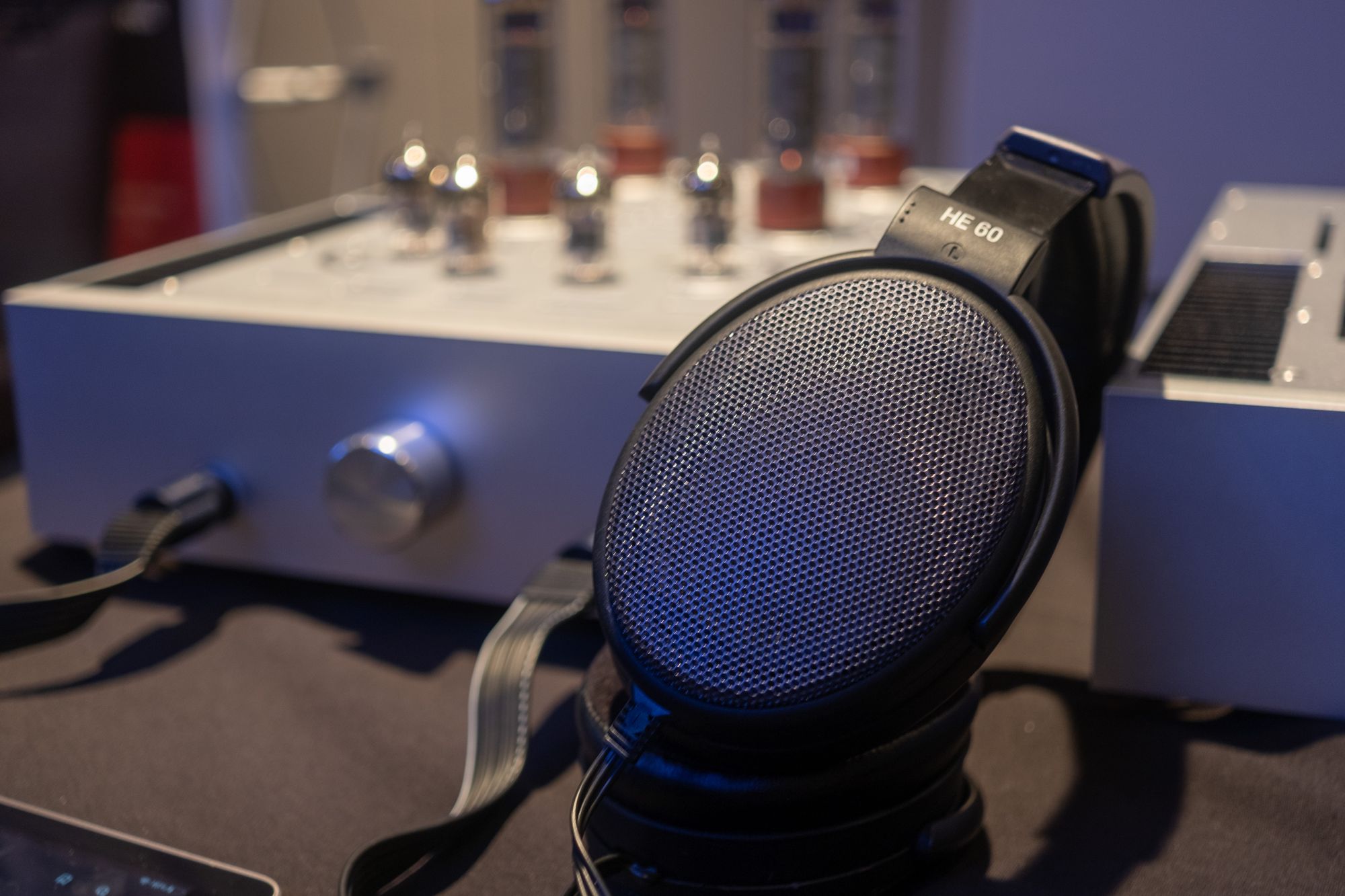
HD660S2
This was the headphone I had the most hope for, and my goodness was this a bummer. With the S2, Sennheiser lowered the Fs (free air resonance frequency) of the driver to help it extend better. I felt the original HD660S sounded muddy to begin with, so I didn't think adding bass was the answer but was willing to be proven wrong. Unfortunately, this was not the case. I think this is the roughest HD6X0-series headphone I've heard to date. The bass was elevated, but it sounded quite muddy, lacking in definition and mushing together bass lines. Midrange is recessed relative to the HD600 and HD650, which I believe are the main reasons to buy the two, as they replicate midrange tone so well that I forgive most of their other faults. The treble sounded grittier than not only my HD580 and HD650, but also my memory of my HD660S. This feels like a downgrade in every way, unless bass extension with no priority given to bass texture is desired. Even then, buy a Beyer, I don't know. This sucks, and I'm so worried about the future of Sennheiser if this is what they believe we want. This is Avatar: The Last Airbender (TV Show) v.s. The Last Airbender (Movie) levels of bad. Maybe the HD660S3 will be better.
HE60
This headphone wasn't officially in the show but a friend brought it with him to try with the Eksonic T2. I've never heard an HE60 before but was curious to hear what Sennheiser was able to achieve in the electrostatic headphone space decades ago. Frankly, Sennheiser never should have stopped making this. While it measures similarly to the HD6X0 series, it sounds quite different in presentation. HE -60 has the light, ethereal texture most electrostats have but manages to avoid being as shouty as most Stax headphones. While it's missing a lot of the midrange magic the dynamic variants have with its faster driver, it manages to be the most "normal" sounding electrostatic headphone I've ever heard, which includes the Stax X9000. It leans a bit bright for my taste and a little too unfixable to justify owning but if I ever find one for sane prices, it will be hard to resist buying one.
Spirit Torino
Pulsar Aluminum
I've usually avoided visiting the Spirit Torino table because my first experience at their table was incredibly rough, so I've wanted to give them some time to develop new products. The Pulsar was certainly less bad than the Twin Pulse I used years ago, but it was still quite...rough. Generally, they sounded like listening to music coming from a cave. Transients were actually decent but combined with the recessed midrange it felt strange. It bordered on sounding potentially like a "better Grado" but something inside was broken.
Valkyria Titanium
Similar to the Pulsar but brighter, worse. Hilarious that this one costs double. It's $12,000.
Subtonic

STORM
This has been hyped up and frankly, it didn't disappoint. This was my favorite transducer of the show. Treble leaned a bit elevated in a way that I enjoyed. Midrange timbre wasn't HD6X0-good, but nice enough to not fuss too much. Bass was a tad elevated, but roughly to my preference, maybe a dB or two too much. Dynamics were fantastic, not just for an IEM, but even compared to most over-ear headphones I heard at CanJam. It's insane that I've been trying to justify the $5,200 price to buy one myself, but it was very, very good.
Stax
L700 MK2
I've owned many Lambdas (this shape's lineup name) and have used many more. This is...one of them. Center midrange sounded shouty (a common Lambda trait) and it was warmer than any other Lambda I've heard. I'd rather use a Lambda Professional or Normal Bias Lambda. I'd even rather use a Lambda Signature, which I feel is too bright and limp for me. And the kicker is that all of them, combined, are attainable for less than the price of just the L700 MK2. No warranty though.
T+A
Solitaire T
Wow, this is so expensive. This is a $1,600 wireless headphone. That's almost the cost of three AirPod Maxes. I hated the Focal Bathys after using it a few months ago, so I was wary of how much T+A can extract from a closed wireless headphone. Turns out, more than Focal, apparently. It was still compressed-sounding, but it wasn't nearly as harsh and metallic in the midrange as the Bathys. It was a bit too bassy even for the show floor, but I'd imagine the bass elevation would be welcome in a plane, in case the ANC doesn't block out all the external engine noise. Overall, sounded not bad, but I'll stick with my JBL 760NC.
Solitaire P
I heard the P-SE last CanJam and felt it was seriously lacking in extension and midrange tonality. The P is a little better, and I swear it had a little more bass extension, but it still sounded quite meh. It feels more like a DCA Ether 2 competitor than a summit-fi headphone. They were strident, completely lacking in attack (maybe even less than the Solitaire T!), and still off in midrange tone.
Thieaudio
Prestige
The Prestige sounded way too bassy, way too congested, and way too artificial. Severely lacking in decay. I had to tell myself to be kinder to it because I assumed it was an entry-level product but when I saw it was $1,299 I had to wonder if that was a mistake.
V16 Divinity
This one was a little better. The bass was more controlled, at least. There was a strange overtone emphasis that I found distracting and midrange was somewhat shouty. Tone was also more plastic-sounding but I at least could tolerate this one.
Unique Melody
MEST MKIII
The timing of hearing this is pretty nice because I've just used a MEST MKII recently. My biggest gripes with it were that the midrange transition between the drivers on the MKII sounded off and the bass was lacking in impact, though not lacking in quantity. The MKIII on the other hand seemed to sound less disjointed in its crossover but bass sounded muddier. Seems like one step forward, one step back. Maybe two steps back--I normally don't care about how an IEM looks but wow does this thing look like a KZ knockoff.
Vision Ears
PHöNIX LE
I thought the original PHöNIX was okay if maybe a little recessed in midrange and muddy in bass. Either this one dipped center mids more or I was too generous in my assessment of the original. Center midrange sounds veiled but also a little shouty in the upper midrange. Wonky.
Warwick Audio

Bravura
I was told that the gain on the amp may not be enough for the show but I found it listenable close to max volume. This one sounded weird in a way I've never heard in a headphone. While the Bravura is a single-driver electrostatic headphone, it somehow presented mids such that it sounded half a beat slower than the bass and treble. It sounded so weird that I never was able to get comfortable with the actual sound and understand it, other than thinking it was bright and midrange tone was abhorrent.
Woo Audio
WA7e
This interested me because I love the aesthetic of the WA7 but can't justify buying one because I don't like the sound of the normal ones. The WA7e, though drives electrostatic headphones, and my current system is a little ridiculous so I'd take a bit of a sound quality hit just for convenience. Unfortunately, it clipped between 1:30-2 on the ES-1a and I heard people complain about clipping with other headphones so it's a no-go. It seemed to lean on the warm and hazy side from what I could tell though.

Yamaha
YH-5000SE
As a huge fan of the original "orthodynamic" lineup from decades ago, the YH-5000SE was high on the list of headphones I wanted to try. I wish I didn't. I did only try them with the leather pads, but it shocked me that anyone was able to listen to this and earnestly say, "Yeah, that sounds good." The YH-5000SE has the unfortunate combination of way too much midbass and an absolute cavern in the upper midrange. Treble was gritty, grainy, and harsh. Midrange tone sounded incredibly plastic and broken. Bass had no sense of separation. In my notes, I wrote, "It's like they listened to a Hifiman HE400SE and said, 'This sounds too good.'" The YH-5000SE was so disappointing to use and I noticed grimaces on many guests' faces when I passed by the booth. But, it's still not as bad as the Dekoni Cobalt.
Zähl
HM1
Just like with the T2, these are show impressions and should be treated as such. It's entirely possible that what I was hearing won't translate to a quiet setting, but wow I really liked this amp with the Weiss 502. I plugged my Caldera into the HM1 and noticed my issues with the bass texture were largely alleviated, the midrange timbre seemed closer to what I was expecting. I'm not a big fan of solid state headphone amps because I always hear either a glare in the treble or a grittiness throughout, and I've tried many. It reminded me more of the push-pull 845 tube amps I've heard--less glary but not quite as warm as a 300B or 2A3 amp. I didn't even try the cool features. If I had $9,000 burning in my pocket to spend on an amp I'd only use with headphones, I'd have ordered one on the spot.
ZMF Headphones
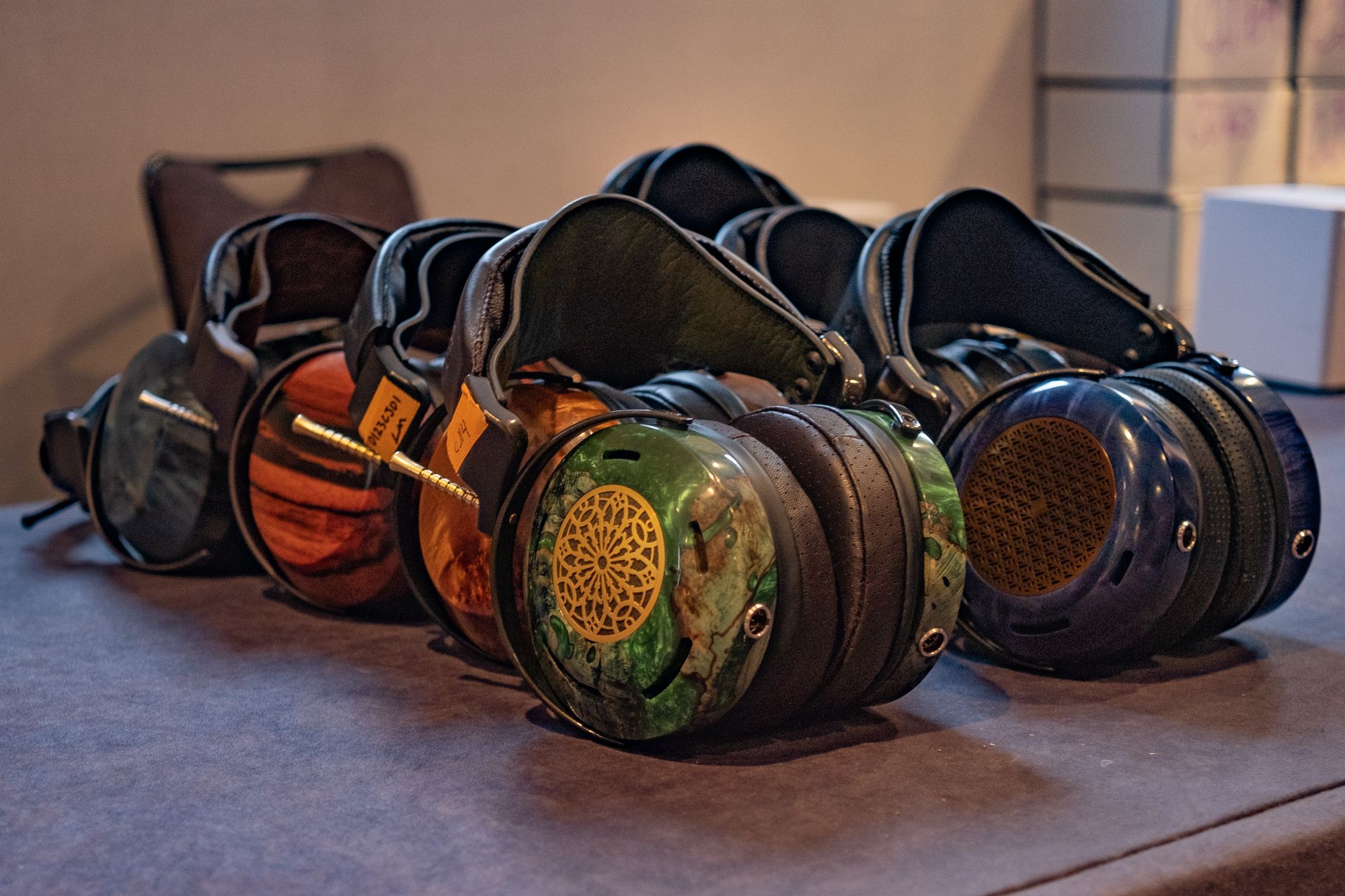
Atrium Closed
The Atrium Closed was an interesting case. I used it off an ECP amp in the ZMF room and found it to be rather strident and grainy. Bass was fun, and the soundstage had a sense of echo that I loved on the ES-Labs ES-R10, but I can't say it's something I wanted to listen to again. However, with the modded Bottlehead Crack that was also in the room, its midrange filled up dramatically. It was no longer verging on tinny or gritty, but it was still definitely colored. The Crack does have high output impedance so that's likely what's saving them. Interesting listen. Not really for me, but ZMF does seem to try to have a product for several different markets. It's definitely going to be hit or miss, especially when used with amps with low output impedance.
Humble
CanJam weekends are always so magical. A true audio enthusiast's oasis. However, time behaves differently on these weekends. It could be all the audio excitement, new release hype, or perhaps there is snake oil in the air, but the weekend as a whole felt very intense. This was the first CanJam in which we, as the Den-Fi team, came together to tackle the event. At the end of it all, I felt incredibly exhausted. Probably the best kind of exhaustion. The weekend was filled with amazing audio setups, incredible music, captivating talks, and panels, but the best part for me was the people. Being able to meet friends, industry professionals and leaders, reviewers, and fellow nerds who just want to experience the euphoria that wiggly air can provide. I hope all of you reading this get to experience a Canjam weekend, and I hope you enjoy experiencing a glimpse of this CanJam weekend through our eyes and ears. As I conclude our CanJam NYC 2023 impressions, I decided my part should be to tackle one headphone, in particular: the hallowed Sennheiser HE-1.

Sennheiser HE-1 Impressions
The Sennheiser HE-1 is one of the most highly-regarded headphones in the world. It is Sennheiser's magnum opus, ostensibly a no-compromise approach to headphone design. With an elegant Carerra marble base (which was famously favored by Michelangelo), and its mesmerizing motorized tube start-up and glow, it is easily the best presentation and builds I have ever seen in personal audio. The HE-1 shamelessly screams uncompromised luxury.
With a price tag that exceeds most people's yearly salary, the HE1 is not for the faint of heart. The HE1 is the ultimate expression of Sennheiser's dedication to uncompromising sound and engineering excellence. However, for those audiophiles who demand the absolute best, does it live up to the hype?
Since starting the hobby nearly a decade ago and after listening to many incredible headphone setups ranging into the 5 figures, It was one of my most anticipated listens at the show. At the start of CanJam NYC 2023, the Sennheiser booth offered limited appointment slots for the HE-1. By the time I stopped by the Sennheiser booth at the show's start, half the slots had been filled up. During my appointment, the Sennheiser rep took us up to an elevator to an undisclosed private hotel room where the HE-1 was set up for demo. With the HE-1 set up on the desk in a rather regular hotel room desk, a timer was set as each of us went to sit down and listen to the HE-1. The HE-1 was set up with an iPad with Tidal loaded, so we had the liberty to play our favorite songs for a limited time. When my turn came up, I took a deep breath and listened to my well-known tracks. The tracks I played were: Fleetwood Mac's Dreams & Everywhere, Alina Baraz & Galimatias Unfold, Miles Davis's Blue in Green, and an unknown classical song played by the person before me.
After my session with the HE-1, I felt a lot of emotions. It was an intense listening experience. I couldn't help but be impressed with the HE-1. However, soon after my session ended, I had a rather sinking feeling afterward. In that moment of immediate reflection, I realized: I was a bit underwhelmed by the experience. It is an excellent headphone… but therein is the issue: it sounds like a headphone, and just like a headphone, it is faced with compromises. As a complete package, I still came away from it, wanting more. I can't be angry with the sound, but while I understand the deliberate choices Sennheiser made regarding sound, I don't agree with every choice. Let's talk about each aspect of it.

Tonality-wise, it is regarded as the gold standard by many, and it should be. Tuned with Sennheiser's modified in-house diffuse field target, it aims for neutral with a bass boost. It closely adheres to Harman's 2018 AE/OE target, and gets closer to good speakers in a room than any headphones I've tried. The overall signature maintains a level of neutrality and timbral adherence to reality that I find accurate.
The bass elevation allows for more richness, and it can kick when it's called upon, with a respectable level of authority for an open-back electrostatic headphone. Overall, it's quite tasteful and strikes an outstanding balance of depth to lower-end registers without being muddy or boomy. Mids are mostly normal sounding, but I found my main complaint with HE-1's tonality was in the upper mids, where there was a Hifiman-ish 1-2 kHz cut which pulled back vocals a bit. The treble was surprisingly my favorite part of the HE-1's tonality. I found the treble well extended with excellent air, minimal glare, and great texture.
The HE-1 is a technically proficient headphone, as it should be. However, a common theme with this headphone is that it is not perfect, but it is mostly excellent. The imaging is one of the best of the best, I’ve yet heard on a headphone. The placement of each element of the track is extremely precise and honest to production. Each element existed in space as the track called for it. During my listening session, I was with a professional musician. She was moved by the true-to-life placement and presentation of instruments like she was in person at the orchestra.
The soundstage width was not as wide as Sennheiser’s HD800 or grand in height and depth as the Stax 009S or X9000. The placement was more intimate than expected but had distinct layering and texture. The presentation reminded me a lot of the HiFiMAN Susvara while being a bit more defined but retaining similar width and tighter depth. Thankfully, I found HE-1 was not imparting a diffuse layer of coloration like the HD800 often does. The resolution was, again, excellent but not the best I have heard. It resolves similarly to a HiFiMAN Susvara or X9000 if I was to place a similar comparison.

Dynamics and transients were my most significant points of concern. The HE-1 does not sound like a typical electrostatic headphone. Electrostatic headphones often have a razor-sharp attack and truncated or rapid decay. The HE-1 strikes a rather odd middle ground. The attack was rounded, and a bit blunted. There was no real bite in strings, piano hits, or sharpness in the leading edges of notes. Especially compared to much less expensive headphones like the Focal Utopia or HiFiMAN HE-6, where the attack is rather immediate, sharp, but still heavy and engaging.
The transient response is closer to the softer edge of the spectrum, aligning more with headphones such as the HiFiMAN Susvara or ZMF Atrium. Unfortunately, the end results feel somewhat dull and unengaging to me. It just did not sound as lively as I'd have liked, and could have been better in its macro-dynamics. This choice could have been made to purposefully avoid the possibility of listener fatigue, which would follow the common theme so far of "safe" choices. Microdynamics was slightly better but still does not match the level of headphones like the HD800, which seems to draw the listener more intently to the finer details of the music.
The decay lingered a bit but often did not add to any real body after each note. It sounded slow enough for an estat that it was awkwardly slow. There was no real bass pressure, rumble, or sense of slam or impact. Especially compared to headphones like the HiFiMAN HE-6 and LCD-4, where the bass in those headphones feels more textured, thunderous, and subwoofer-like. It even falls short to other, less recognized for bass headphones like Susvara, where you could feel the bass hit deep in your chest with a thicker body and weight more palpably than with HE-1. Various drums sounded hollow, and frankly lacked nuance in the lower registers. I can't say for sure, but all of this seems like it was a deliberate choice to create a middle ground... which unfortunately led to a rather laid-back, unengaged experience.

The upside of all of this was how rather effortless the headphone always sounded. For a headphone targeting the widest audience and making a statement of "flagship," I can see why Sennheiser made this decision. However, making a "no-compromises headphone" is somewhat oxymoronic because audio is inherently a choice between spectrums, choosing your set of compromises. My ideal balance is usually similar to quality loudspeakers in a semi-treated room, which should reproduce the live or "live from the studio sound" that the music was steered towards during its mix/master.
That preference includes a spectrum of accurate and lively dynamics, proficient detail and reproduction of nuances in textures between vocals and instruments, as well as having proper imaging and spatial presentation that is honest to the recording. The challenge becomes when dealing with the compromise that is a headphone. Would I call this headphone the best? For me, the answer comes down to the classic cop-out answer: preference. The HE-1 makes deliberate choices I found lean towards, frankly, a very "safe" headphone that most would call "nice." Perhaps my disappointment may have come from the expectations of perfection instead of the engineer's intention of compromised excellence.
Coda
We came, we saw, we heard, we probably spent way too much money on food.
Even though most of the text was devoted to hearing things, our listening really only took up a small amount of time compared to meeting new friends, old heroes, strengthening existing relationships, exploring the city in whatever brief bursts we could, and staying up too late at the AirBnB.
But to devote a whole other piece to the rest of the laughs, food babies, and late nights would require many many more pieces, each of which would likely make this one seem like a pithy yarn spun offhand.
CanJam is great for people who want to hear a bunch of headphones, but for us, CanJam is a place for tight friendships, loosely corrected around audio. We hope to see you there again next year!
Comments?
Leave us your opinion.